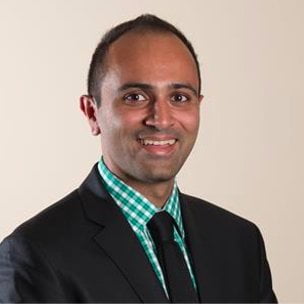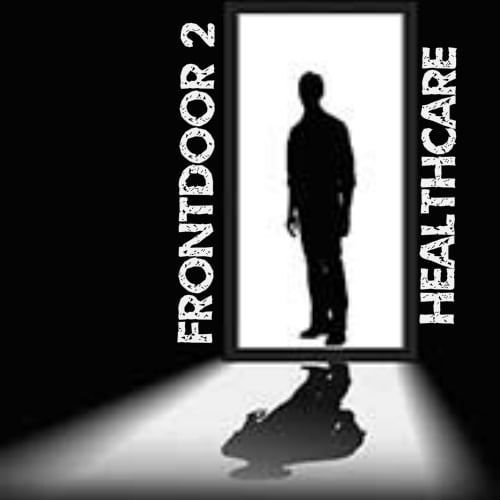The healthcare system in Canada is in trouble, and physicians have a significant role to play in order to address many of the shortcomings, particularly in regards to resource utilization.
In 2014 total healthcare spending was an estimated $215 billion, roughly $6,045 per person, and consumed 11% of Canada’s GDP. Over the past ten years, it has increased roughly 7% per year due to population growth, inflation, and an increasingly aging population [1]. However, in the past few years, government healthcare spending has not increased to match this demonstrated growth. Instead, hospitals have been provided a fixed budget and instructed to stay within those limits. As a result, we’ve noticed support staff and nursing shortages at many hospitals.
The healthcare budget and the critical link
When attempting to balance a budget, hospital administrators have a few factors to consider; revenue generation, administrative overhead, resource utilization (labs, imaging and drugs), efficiency, productivity, and the services offered. Within this model, physicians are currently a ‘free’ resource to hospitals, as they are employed by the hospital but paid by provincial governments. Nursing and managerial staff are paid from the hospital budget, thereby making them a resource to consider in the context of cost cutting measures.
Within this system of funding silos – hospital resources with one budget on one side, and independent physicians utilizing those resources on the other – an often forgotten but critical link exists. Continually cutting hospital budgets as a cost-saving measure on its own is futile without exploring how physicians make decisions on utilizing limited resources.
In regards to investigations and treatments, it is clear that there is substantial misutilization of resources within our system. Data out of the United Kingdom has suggested that within their healthcare system, 10-15% of investigations or procedures provide little to no benefit, and may often cause harm [2]. Similar evidence from the United States suggests this proportion is between 30-40% [3]. The data examining this phenomena in Canada is limited, but likely resides between the two.
Is it worth the cost?
If our sole objective is providing world class care then cost does not matter. However, as physicians we also have a responsibility to the system as a whole. Irresponsible physician spending is a significant contributor to the healthcare system that is typically overlooked. In my experience, it is commonplace to hear things like; “once their blood work comes back normal, they can go home”, or “I don’t anticipate anything abnormal on the CT scan, and we can let them go home after that.” Many staff will often suggest they’re ordering these investigations because they “don’t want to miss something”, or ask “what if?” while citing delayed diagnosis or unexpected morbidity and mortality as a potential source of litigation.
Even more troublesome, Canada is not obtaining the outcomes we should expect with all of our spending. The latest Commonwealth Fund ranking of 11 industrialized countries put Canada at number 10 [4]. Comparing apples to apples, only the United States performed worse on this list, so it is quite clear that more spending does not lead to better patient care.
Does litigation affect resource utilization?
The idea that we need to practice litigiously is an erroneous one, as it is rare that physicians in Canada are actually successfully sued. Physicians in Canada are uniformly represented by the Canadian Medical Protective Association (CMPA), and according to their latest statistics, in 2014 they had over 91,000 members who were involved in 1092 legal actions (1.2%), of these only 26 resulted in judgement for the plaintiff (0.1% of legal actions) and another 36% were settled [5].
Notably, the majority of legal actions taken against physicians are not a result of negligent treatment, but of perceived mistreatment, improper/poor communication with the patient, and physician attitude [6,7]. That being the case, it seems unnecessary to practice medicine with an aim of avoiding litigation rather than simply providing good medical care.
The role of evidence based medicine in resource utilization
Evidence based medicine (EBM) is thought to be one of the greatest principles in modern medicine and is taught fastidiously in medical schools and residency programs. However, for the reasons mentioned above it often isn’t followed by practicing clinicians. It it is time we re-embrace evidence based medicine to help minimize the potentially detrimental and unnecessary costs that are burdening our system.

Advances in clinical research in recent years have provided an exponentially growing database of evidence-based decision rules and guidelines. These provide individual physicians the necessary tools to accurately evaluate clinical benefit of specific investigations and treatments as they apply to their patients, and potentially limit other extraneous resource spending. Barriers exist however, as many well established guidelines are not actually implemented at the bedside; these include the lack of system-wide level protocols, effective knowledge dissemination, and concrete accountability mechanisms.
EBM also doesn’t provide all the answers to this problem. Traditionally clinical trials have focused heavily on clinical outcomes, with very little information on actual cost effectiveness. The next major step in research is to incorporate robust cost-benefit analyses alongside EBM to provide Evidence Based Practice guidelines. Not only do physicians and policy makers need to know what the most effective medicine is available, but also what the most cost-effective medicine makes sense for a sustainable healthcare system.
Is it time for physician cost awareness?
Finally, there is emerging evidence that cost awareness may be an effective strategy for physicians to perceive the economical influence of their practice. Some studies have examined the impact of alerting physicians to the cost of their resource utilization. The data collected has suggested that this intervention results in decreased spending, and is well received by physicians. More research is required to examine this strategy, and to evaluate whether physicians would develop alert fatigue with prolonged cost analysis inundation, and if there are high yield areas where this may be applied [8].
Final Thoughts
One of the greatest challenges of being a physician is caring for individual patients while being cognizant of the healthcare system as a whole. As emergency medicine specialists, we utilize a significant proportion of hospital resources in the acute setting. Do you believe physicians have a critical role to play in resource utilization? How should evidence based medicine and evidence based practice be implemented? Should physicians (and/or patients) be aware of individual costs of investigations and treatments when making clinical decisions?
Please share your thoughts with us below.
A special thanks to Dr. Jack Kitts, and Dr. Jeffery Turnbull (Ottawa Hospital CEO and Chief of Staff respectively) for their excellent insight into resource utilization and financial considerations at the hospital level.
[bg_faq_start]
References
- National Health Expenditure Database – Canadian Institute for Health Information.
- Alderwick, H. Robertson, R. Appleby, J. Dunn, P. Maguire, D. Better value in the NHS: The role of changes in clinical practice. The Kings Fund. July 2015.
- Delaune, J. Everett, W. Waste and Inefficiency in the U.S. Healthcare System. Clinical Care: A comprehensive analysis in support of System-Wide Improvements. New England HealthCare Institute. Published 2008.
- Osborn, R. Schoen, C. 2014 International Health Policy Survey in Eleven Countries. The Commonwealth Fund. Published 2014.
- The Canadian Medical Protective Association – 2014 annual report.
- Blackwell, T. Doctors’ association accused of using aggressive ‘scorched earth’ approach to defending malpractice suits. The National Post. April, 2013
- Flood, CM. Epps, T. Waiting for Health Care: What role for a Patients’ Bill of Rights? McGill Law Journal. 2004.49;515-550.
- Riggs, K. DeCamp, M. Providing Price Displays for Physicians: Which Price is Right? JAMA. 2014.312(16);1631-1632.


